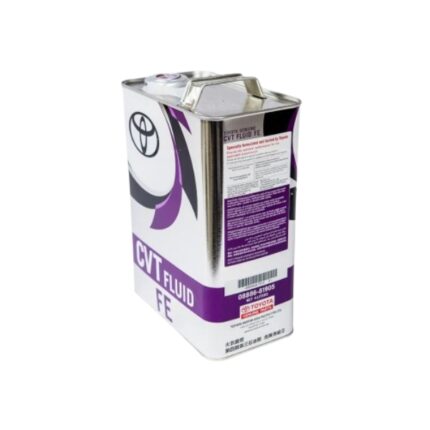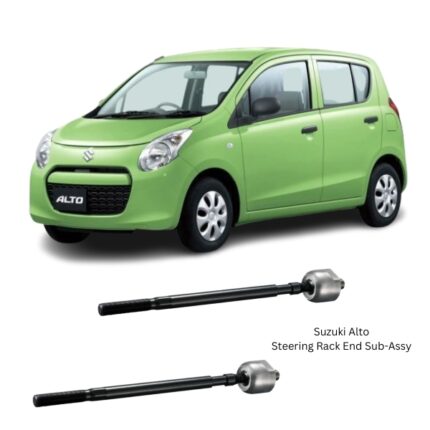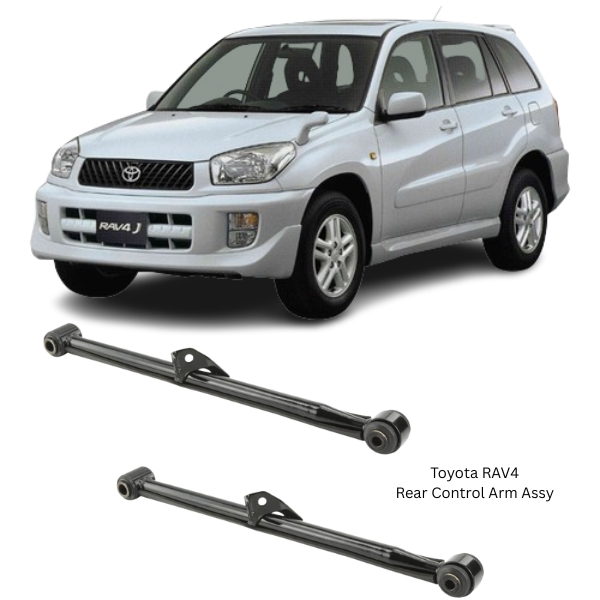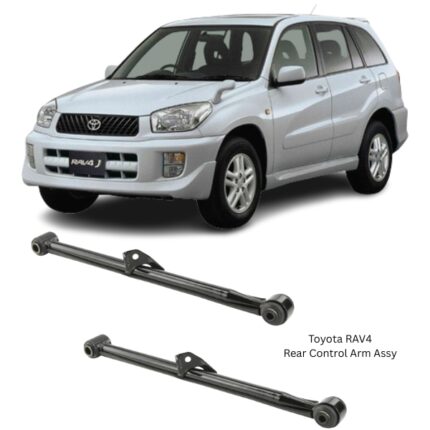-11%
Get Toyota RAV4 Rear Control Arm Assy 48730-42020 in Kenya
The Rear Control Arm Assembly is a vital component in a vehicle’s rear suspension system. Designed to connect the chassis to the wheel hub or axle, the control arm allows for vertical wheel motion while maintaining proper wheel alignment and absorbing road irregularities. It plays a pivotal role in ensuring vehicle stability, precise handling, suspension articulation, and overall driving comfort. The rear control arm, often constructed as part of a multi-link or trailing arm setup, works in harmony with other suspension elements like bushings, ball joints, and dampers to deliver optimal ride quality and handling performance.
Purpose and Function
The main functions of the rear control arm assembly include:
-
Wheel Positioning: Maintains proper alignment of the rear wheels relative to the vehicle frame.
-
Suspension Movement: Allows the wheels to move up and down with road contours without shifting their lateral position.
-
Handling and Stability: Controls camber and toe angles during driving, especially through turns and over uneven surfaces.
-
Load Transmission: Transfers forces from the wheels—due to braking, acceleration, and cornering—to the vehicle chassis.
-
Vibration Isolation: Dampens and filters road-induced vibrations before they reach the passenger cabin.
The control arm assembly is essential to ensuring that the tires maintain maximum road contact for traction and that the vehicle behaves predictably under various driving conditions.
Design and Construction
Rear control arm assemblies can differ based on vehicle design, rear suspension type (independent or solid axle), and performance requirements. However, most rear control arms share common construction features:
1. Arm Structure
-
Material: Usually made of stamped steel, cast iron, forged steel, or lightweight aluminum alloy.
-
Shape: Varies in form (A-arm, L-arm, trailing arm, or wishbone), depending on how many connection points it has and how it integrates into the suspension geometry.
2. Mounting Points
-
Chassis Mount: A pivot point that attaches to the vehicle frame or subframe, often integrated with bushings.
-
Wheel End Mount: Connects to the rear knuckle or axle housing using a ball joint, bushing, or direct bolt.
3. Bushing Integration
-
Rubber or Polyurethane Bushings: Fitted at the pivot points to absorb shock, reduce noise, and allow limited movement.
-
These bushings play a major role in minimizing metal-to-metal contact, improving comfort and component longevity.
4. Ball Joint or Fixed End
-
Ball Joints (where applicable): Allow multi-axis rotation at the wheel connection point.
-
Some rear control arms have fixed or bolted ends if limited movement is required.
Types of Rear Control Arms
-
Trailing Arms: Oriented longitudinally, connecting the axle to the frame. Common in solid axle designs.
-
Lateral Links: Positioned transversely to control lateral movement of the rear axle.
-
Upper and Lower Control Arms: Found in multi-link or double wishbone suspension setups, they work in pairs to precisely control wheel motion.
Each design offers a different balance of handling precision, comfort, and structural strength based on the vehicle’s intended use—be it performance, utility, or everyday commuting.
Mechanical Properties and Material Advantages
The rear control arm must possess several critical characteristics to withstand operational stresses:
-
High Tensile Strength: To resist deformation from road impacts and cornering forces.
-
Corrosion Resistance: Especially in climates with moisture or road salt, which can deteriorate exposed metal.
-
Fatigue Durability: Since the arm endures constant dynamic loads, it must resist cracking and metal fatigue.
-
Lightweight Construction: Helps reduce unsprung weight, improving handling and suspension response.
Aluminum control arms are favored in modern performance and luxury vehicles due to their combination of light weight and structural integrity, while steel control arms are more common in commercial, utility, and economy vehicles for cost-efficiency and durability.
Performance Characteristics
-
Ride Comfort
-
The bushings in the control arm assembly isolate road shocks and vibrations from the chassis, improving ride comfort.
-
Proper articulation allows the suspension to respond smoothly over bumps and uneven terrain.
-
-
Handling Precision
-
Maintains accurate camber and toe settings during dynamic driving.
-
Minimizes body roll and improves cornering stability by controlling rear wheel motion.
-
-
Noise, Vibration, Harshness (NVH) Control
-
Rubber bushings absorb operational noise and reduce harshness transmitted to the cabin.
-
Properly functioning control arms reduce clunks, rattles, and suspension play.
-
-
Durability and Load Capacity
-
Engineered to endure a high number of cycles over the vehicle’s lifespan.
-
Withstands braking, acceleration, and cornering forces under full load.
-
Common Issues and Symptoms of Failure
Over time, rear control arm assemblies may wear out or become damaged due to age, harsh driving conditions, or accidents. Common failure indicators include:
-
Clunking Noises: Especially over bumps, indicating worn bushings or loosened mounting bolts.
-
Poor Handling or Drifting: Suggests compromised alignment due to control arm deflection or misalignment.
-
Uneven Tire Wear: A result of improper camber or toe angles caused by failing arms or bushings.
-
Vibration and Shaking: Particularly during acceleration or braking, indicating possible looseness or bushing degradation.
-
Visible Damage: Cracks, rust, or bent metal upon inspection warrant immediate replacement.
Replacement and Maintenance
a) Inspection
Control arms should be inspected during regular suspension checks, especially if there’s abnormal tire wear, handling issues, or after a collision.
b) Replacement Guidelines
-
Always replace control arms in pairs (left and right) to maintain symmetrical suspension performance.
-
Use torque specifications recommended by the vehicle manufacturer when installing.
-
Wheel alignment is essential after replacement to restore correct suspension geometry.
c) Maintenance Tips
-
Avoid aggressive driving over potholes or curbs to prolong the life of suspension components.
-
Clean and rustproof the underbody to minimize corrosion in metal components.
-
Replace worn bushings or ball joints promptly to prevent damaging the entire control arm.
Manufacturing and Quality Standards
OEM and high-quality aftermarket rear control arm assemblies undergo stringent testing to ensure they meet or exceed original equipment specifications:
-
Load Testing: Simulates real-world road conditions to ensure the arm withstands impact and continuous load.
-
Material Certification: Ensures only grade-certified metals or alloys are used in production.
-
Dimensional Accuracy: Maintains exact fitment to match factory specifications for bolt patterns, bushing alignment, and geometry.
-
Corrosion Testing: Coatings and finishes are tested in salt-spray chambers to ensure long-term resistance.
Follow us on Facebook for more parts.





Reviews
Clear filtersThere are no reviews yet.